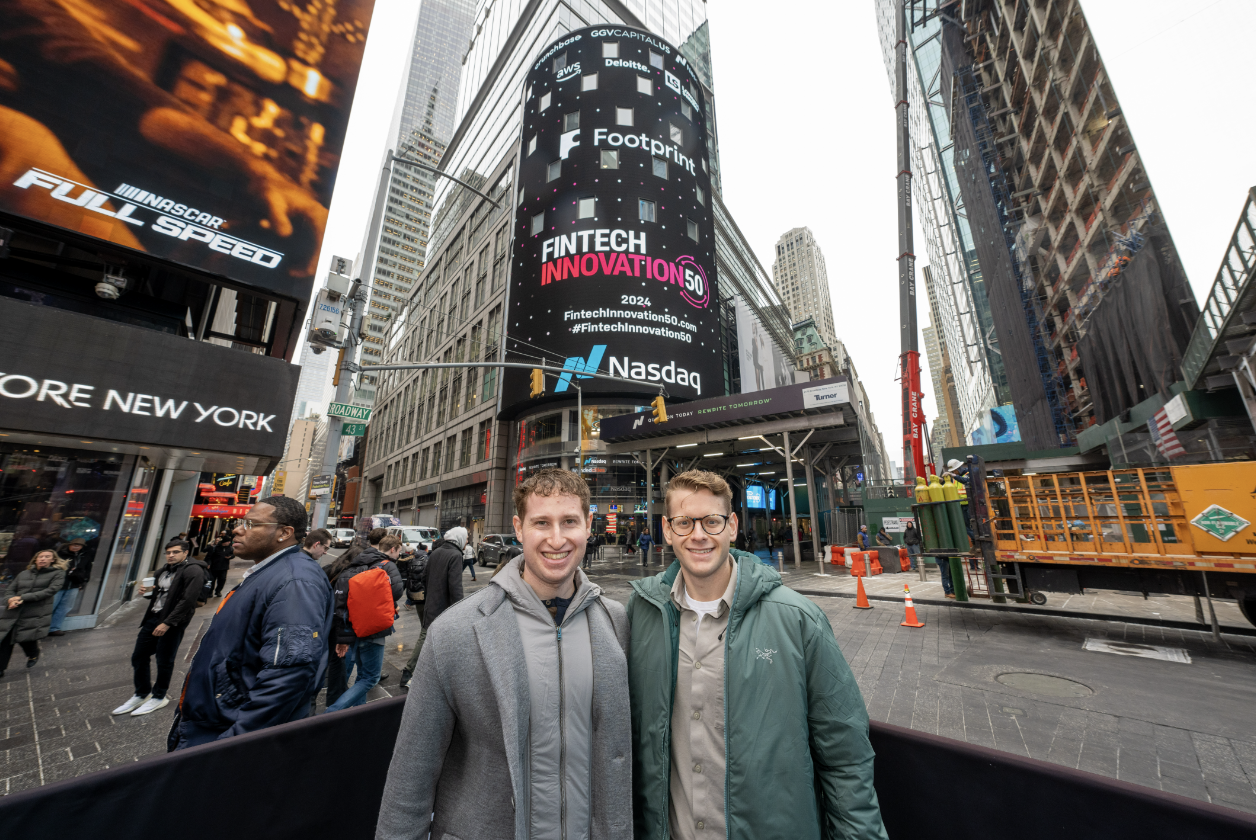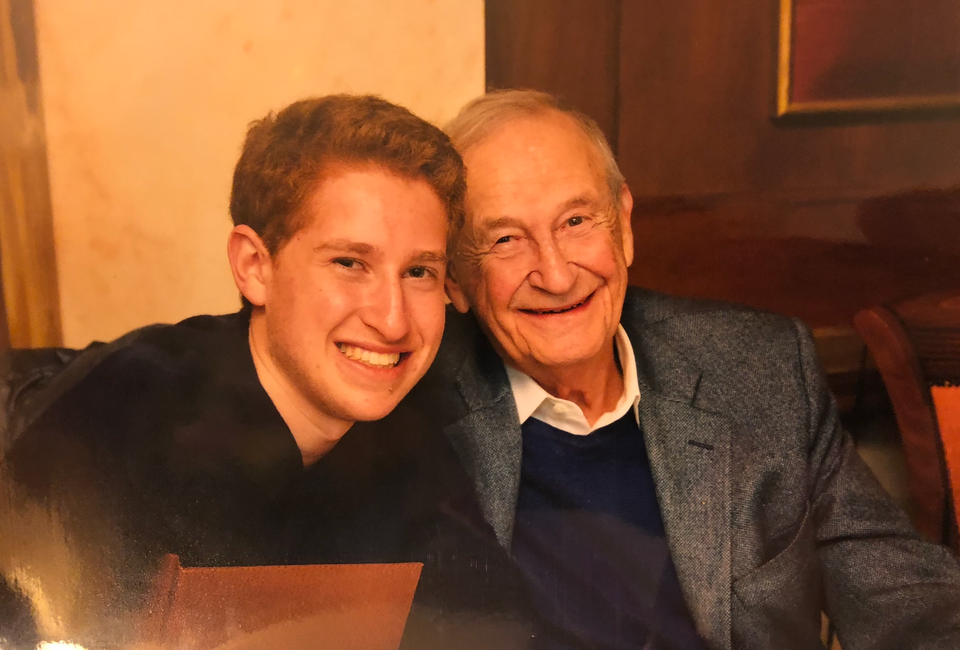Dear Footprint Family,
January was a great start to the year. We grew revenue by 23% MoM. We signed two more customers, including one of the larger Digital Account Opening companies that works with over 200 banks to be their new onboarding solution. We were also honored to be featured on the GGV Fintech Innovation 50 list along with companies we have long looked up to such as Ramp, Plaid, and Stripe.
This update reflects on Footprint as we turn two. It revisits the plan we had for the company at the start to reach our vision. Delves into how we are progressing through that plan. What we have done to hone our GTM. And why Footprint will become an increasingly differentiated company in a fragmented space full of point solutions.
I am very excited for February—there is so much more to come.
Eli

Product Releases from Last Month
- Rules Engine Improvements (ability to edit rules and build dynamic step-ups)
- Mobile SDK released
- iOS & Android Native SDKs
- Flutter SDK
- Improvements to manual review experience (shortcuts & automation)
- Integration of a new data vendor on decisioning waterfall (Lexis)
- Labels API V1 (allow customers to label whether or not onboarded users ended up being “good” or “bad” actors).
- Proof-of-Address and Proof-of-SSN automatic step-ups & ability to request more data via manual review (Improvements to our CIP conversion)
- Footprint now supports Spanish localization
- See our changelog for a full list of new features released: https://www.onefootprint.com/changelog
Where we could use help—Recruiting
- GC/Ops
- Three primary buckets here for this role: Ops work, FCRA/Credit work (we want to expand to offer that for our tenant screening vertical), Sports Betting Licenses
Where we could use help—Customer Intros
- Apartment rental marketplaces
- Apartments.com, Rently, Yaardi, Realpage
- Car rental marketplaces/Auto
- Finn, Getaway, Sixt, Drivetime, Hertz
- Other marketplaces
- Outdoorsy, RvShare
- Large auto dealers
- Examples: Lithia, Autonation, Penske Group1
- Investment Platforms
- Stash, WeBull, WeFunder
- Other Fintech
- Possible Finance, Stockpile, Remitly, Lendbuzz, Figure
- Other
- Aylo
Essay
January 29th
“I know the feeling of doing tricks for a skeptical audience.” I re-read the line. And marvel at the prose. I’m in a cafe in Seattle. Murder on the Dancefloor plays. A nice song—it brings me back to watching Saltburn last month. I drink a tasty salted toffee latte. The next song comes on. It is nice too. I go back to the essay titled Permission from my favorite Substack, Bookbear by Ava. “Being able to pull out the genuine warmth behind the performative warmth, the insecurity behind the insecurity, like yanking out a tapeworm from someone’s open mouth. Sometimes it felt gruesome and sometimes it felt joyful. It was what I knew how to do.”
I’m in a reflective mood. Footprint turns 2 on Saturday. Ava’s words resonate with me on multiple levels. One more personal, which I will either return to in this essay or a future one. The other is on the journey of Footprint. In the early days, startups can feel like theatrics. You’re selling to multiple audiences. A mixture of what you do today, and what you’ll do tomorrow. At the start, the focus is in the latter part of that sentence.
To me, Footprint is a very logical set of steps.
- Each company rebuilds onboarding (UX, KYC, security, fraud tools). Automate this process, make it 20% better, and sell it to mid-market companies. Build a compound platform to solve multiple problems at once for these mid-stage companies doing 50-200k onboards a year. Leverage new technology like nitro enclaves and passkeys. Use GTMs around picking off companies with poor doc-scan vendors and in regulated markets such as investment platforms. Use this to get to 1 million portable identities.
- Leverage portable identities from companies in Step 1 to match utility to larger enterprises with one-click potential in industries where we are more dominant. Once again we do not need every F500 company. Just a few who uniquely benefit from the identities + onboarding will bootstrap you to 5 million identities. This is where elements like Connections and Compliance Automation become relevant—you can have a few GTMs here that work at the necessary scale.
- Once you reach between 5-10 million identities, simply the raw number matters now in addition to the context. At this point, you change the buying decision. To date, there are maybe a dozen KYC companies with $75-$125M ARR. It is fragmented. Low NPS and little differentiation. F500 decision-makers won’t get fired for keeping their product. At this size network effect though, it starts to become negligent to not use Footprint.
- Game theory at this point leads to you going from 10M identities to 100M identities. Now you have a chance to genuinely address fraud. Non-Footprint identities become privy to more friction and scrutiny. You’re not just an identity layer to the internet, but the trusted market graph of authentic identities which navigate people on and between different parts of the digital world.
We can’t yet prove point three. But we can prove point one. And why we think that enables us to progress through the next steps. We’ve certainly made mistakes along the way. I’d argue that more importantly, we learned the nuance of step one and the difficulty of someone else adopting our plan. As we turn two, I thought I’d dive into how we are building that automated onboarding to fulfill that step on this journey. And why I’m more confident than ever in the business.
Act 1: Automate Onboarding
“Being able to pull out the genuine warmth behind the performative warmth, the insecurity behind the insecurity”. The upside of attacking a fragmented market segment with low-NPS, scaled vendors is people may not love their current solutions. The downside is their current solutions still do a lot. With an amazing team and novel tech, it took a year to build V1 of Footprint. But even that V1 was missing a lot of tools. Manual review was extremely limited through last summer. We introduced doc scanning last September. Our rules engine was not ready until December. These are difficult features to get right, but there is also a lot of surface area to cover. To sell to enterprise, these are table stakes features.
But you can’t just wait around. We go to market nonetheless. We didn’t sell them the vision. None of our early customers chose us for Act IV. They chose us because we 1) were building a different type of platform to solve onboarding and 2) built each part of it 20+% better. Sometimes that pitch feels performative. A rehearsed charade. Of a platform that, before Act II, is still 20% better. Onboarding is a game of margins. Small ticks up in conversion can generate millions of LTV; single-digit increases in fraud rates can cost millions. It isn’t as sexy as the portable network we would generate, but it is all the while important to a plethora of stakeholders.
We started the company by speaking about the intersection we envisioned between identity and security. As I wrote 18 months in, we began to see the even bigger problem was onboarding. Every company was re-building UX to collect the same information, integrating tools on the frontend for fraud and backend for KYC, building a rules engine to ingest those disparate signals, and then devising a schema to vault the data they collected along the way. This wasn’t just inefficient and expensive: it didn’t lead to good results. To list a few problems we commonly saw:
- Many companies have completely avoidable failures as a result of their onboarding UX. If you let someone enter a PO Box address they will fail KYC. A waterfall that goes to Experian + IDology and not Lexis will fail someone with a single-letter surname.
- An astounding amount of companies cannot automatically step up to collect ID documents, leading to major drop-off. We saw companies with 60% same-day auto-approvals.
- Every time you create a new product, you create a new sign-up flow. We met companies with 20+ sign-up flows depending on product and state someone was in. These require full-time engineers to build and maintain. We have customers with five+ flows, each of which requires its own CIP with their banking partner/BD.
- Rules engines are not intuitive. They also are static. By bridging KYC rules on the backend, fraud tools on the frontend, and our place for both KYC and Auth, Footprint can much more dynamically and progressively assess and act on risk levers.
- Companies build complex architectures to either not have to store SSNs/sensitive PII or they have string together third-party vault APIs at time of onboarding
The original value prop of security meets identity was certainly still there. We used nitro enclaves to build a more developer-friendly solution to vault (and proxy) onboarding data. This was key in closing three of our six largest customers, and in one of the larger companies in commercials with us. But the problem of onboarding was bigger than we realized. At the beginning, we were not scientific in translating these value props to our GTM. The first six months we tried to sell to CISOs/head of engineering-type personas. Even when we learned it was a Product Lead to whom we sold, we were ambitious in wanting to sell to product leads across different verticals. To us, we wanted to be able to have a rules engine and compliance stack that could sell to a bank, and a UX/DX that could help a marketplace. But we began to see the ICP was consistent in the metrics they cared most about: conversion and fraud. We simply had to get better at conveying this value prop to the product leads across companies.
We are increasingly able to go out and sell to a few buckets: the world of ~3000 companies with legacy document scanning/step-up requirements (four of our five largest customers), the world of ~750 companies in regulated industries such as investment platforms (three of our six largest customers), and companies who have reached a size where vaulting matters with onboarding (three of our six largest customers). Footprint uniquely helps these companies. Our doc scan’s use of app clips makes it a best-in-class product from a high-quality auto-capture perspective. Our ability to leverage several disparate device intelligence technologies such as Device Attestation, DRM/DeviceCheck, and DeviceRisk help us to ensure that the device generating and managing their private key is authentic and hasn’t been used to create other identities with stolen PII. This is becoming even more prevalent in an age of GenAI making it easier to create synthetic identities. Our nitro enclaves provide the best vaulting experience embedded to onboarding. As we have zeroed in on these, it has been exciting to see the resonation correlate to growth in GTM metrics.
- Meetings booked doubled in January compared to what we averaged in the Fall
- Our email response rate grew 5x as our sequences became optimized to the above buckets
- We have the most amount of companies in commercials since our start. They essentially all fall into those buckets outlined above.
In Permissions, Ava writes “Lately I’ve become sick of my seal tricks. I’d become someone who was so concerned about doing a good job that I’d forgotten how to discern what a good job really meant.” I smile in the coffee shop, filling up a room designed like a greenhouse to capture whatever sun Seattle had to offer. I do care about the little things. Sometimes too much. The performances that went wrong. The big picture does not matter if the little picture is not done right. My Grandpa’s passing reminded me that the journey is not always easy, but it is to be enjoyed if you do it with purpose, grit, and genuine meaning. I always believed we were the only company in this space with a logical endgame to genuinely remove the toggle between fraud and friction. And while we were not at Act 4 yet, Act 2 was becoming inevitable. We were about to hit 100k portable identities. We would be at 1M portable identities by the end of the year. I remember telling Packy McCormick about that being escape velocity number 1 on his podcast when we came out of stealth. It was a crazy number to me. But optimism shapes reality. And that will be our reality this year.
The technology needed to build portable identity is comprehensive. It requires best-in-class security and strong authentication. The data architecture of multi-tenancy was perhaps our most under-estimated engineering lift since upon starting the company. And the nuances of what is and is not portable are very fine-grained. There is so much more to do, but I would be hard-pressed to not feel optimistic as we turn two, and look toward act two.
Act 2: Leverage the Platform
Act 1 had the question from customers and investors: “how do you replace [insert KYC tool] inside a company?”. To us, that was in building a better core platform for onboarding. Act 2 asks a different question: “how do you leverage the network to crack enterprise?”. We have a similar answer: leverage the unique options now present to us as a better onboarding platform with portable identity. I will keep this section shorter than Act 1. But these are some of the key reasons I imagine leading to us unlocking Act 2.
Everything from Act 1 still holds
We are continuing to double down on truly automating onboarding. The best example of that on our roadmap for this year is our build-out of Footprint Fraud. This is like a Segment/Alloy for fraud. We can leverage the fact that Footprint is the UX for onboarding to plug in third-party fraud tools. This lets our rules engine act not just on KYC signals we generate on the backend, but also these fraud tools from the frontend. Previously, these were disparate systems without the ability to run a central rules engine. We frequently speak with larger companies struggling with the problem of bringing these signals together. Footprint this year will do so as we continue to automate onboarding.
I want to be clear that when we discuss automating onboarding, we don’t expect F500s to give up everything to Footprint. The beauty of Footprint is that while we can be that unified platform, we are also modular as we scale. We believe that the product naturally expands anyway—a fact we have already seen with our existing customer base. We’re rigid about how we KYC and vault data. What parts of the UX you still design, the external fraud tools you’d like to use, and how much of auth we take over are fully up to the customer. We think this approach resonates with enterprises, as it can solve specific issues (say ATOs with our passkey or doc scanning with our app clips) with the ability to expand due to the overall value prop. This is why it does not matter if they don’t use the entire suite of product features like security at the start because 1) one-click KYC becomes a premium feature 2) the rest becomes natural expansion as you clean up KYC market and 3) the core is what guides us toward our new north star of 10M PIDs.
Connections/Localized Network Effects
I wrote November’s update on this, and due to how verbose this update already is I will not write much more. But I have been thrilled to see Connections resonate with so many customers and prospects, and am excited to see the early use cases of it roll out later this year. Even before a post-ATT + post-GDPR, there was no platform able to connect identity (in a privacy-preserving way) across companies contextually and dynamically.
Connections abstracts from the total network size to focus on localized network effects. For some companies, the amount of folks doing a specific action each day is more important than the total sum. As we double-down in the spaces we are in, these localized network effects (and ensuing two-sided marketplace) becomes a dynamic pull to prospects.
Compliance Automation
We’ve been especially pleased with the reception to our compliance automation tool. We’ve had multiple BaaS companies tell us this month that in this heightened regulatory environment, fintech onboarding to partner banks has become one of if not their largest current pain point. A process that used to take a month now may take six, and it is very manual. Our compound suite lends itself nicely here to help expedite this process by automating checks around identity (CIP + Rules engine applied, security (automated checks around encryption, IAM, and secure storage of policies), and the ability to easily sample evidence we increasingly view as an attractive path to become the solution for regulated banks and unlock more of that GTM.
Actually go to Enterprise
As discussed, we didn’t have all of the features needed to sell to enterprise last year. We do now. And we are very encouraged by the reception we have had in those few conversations. The Head of Product at a consumer-facing public company this month told us “none of our competitors are doing what you are on the technology front.” It is time to start more of these conversations.
Curtains
I have about 15 minutes before the meeting at the cafe. I finish reading Ava’s piece. For many moments in the first two years, you find that the skeptical audience for who you are performing tricks is yourself. This may sound counter-intuitive; I certainly believe founders are also the largest believers in their ability to reach the vision. But in reality, you’re both the ring leader and audience member waiting to be entertained. You have too much context, and too much optimism, to not be both.
Let me be clear—we still have a lot of execution to finish Act 1. And then to move from Step 2 to Step 3. In the wake of my Grandpa’s death, I reflected a lot about what Footprint meant to me. I discovered the answer was more than I had ever imagined. Not for the future it could create. But because of the opportunity it gave me each day to truly work with an incredible team to dare to build something great. As we turn two with all of this momentum, I firmly believe we will.
“I don’t think everything is done with reason. Or that all events fall into a story. But I think the exhales are great because they let you view that past—a collection of present memory—in a portrait. And perhaps they make you most optimistic…”
I closed the Notes app on my laptop as my guest arrived. When I returned an hour later, I forgot the initial thought I had left unfinished. I smiled at my overused quote from my favorite short story in Ficciones, and tried to get inside my head. The exhale reference was to the days in life where you give gratitude to the journey, and what it has afforded you the ability to do now. And I think that portrait I reference. Well, it is the one you realize you already painted. One million portable identities used to be a dream. As we turn two, it will be our reality this year. Here is to solving onboarding. Solving real customer problems. And doing whatever it takes to keep that portrait hanging.





